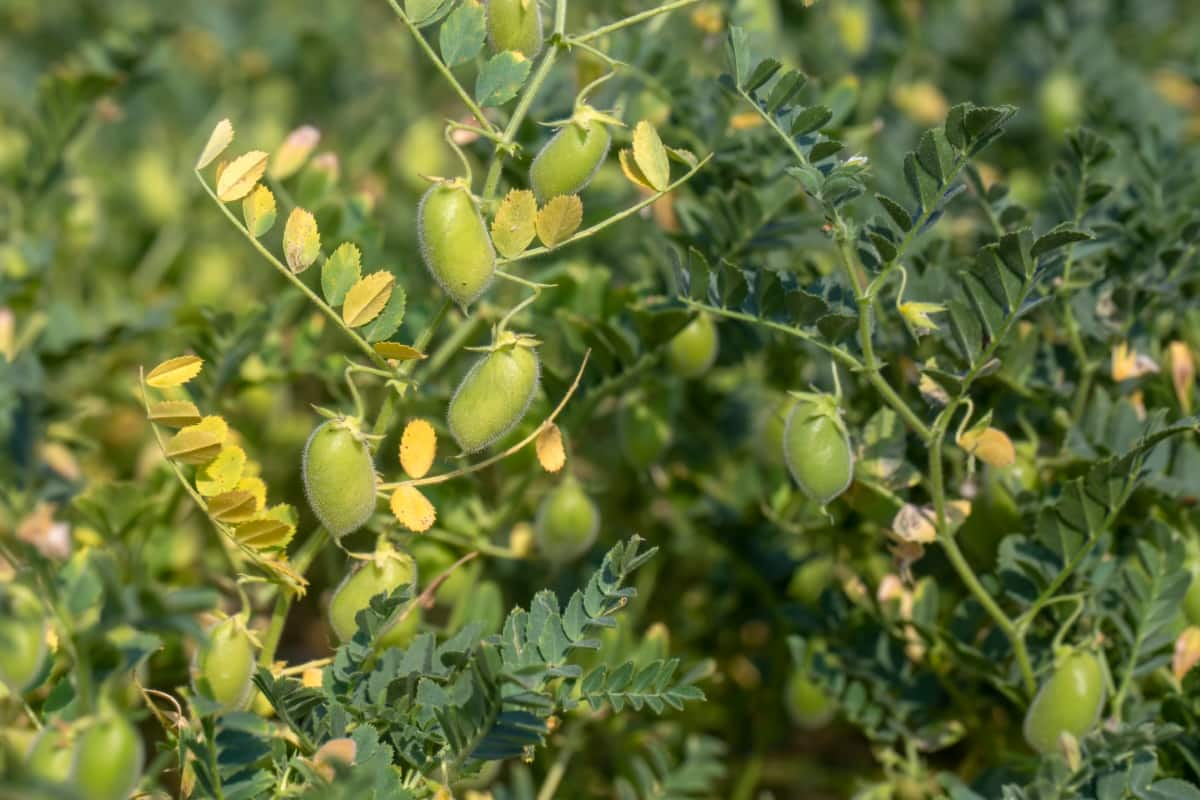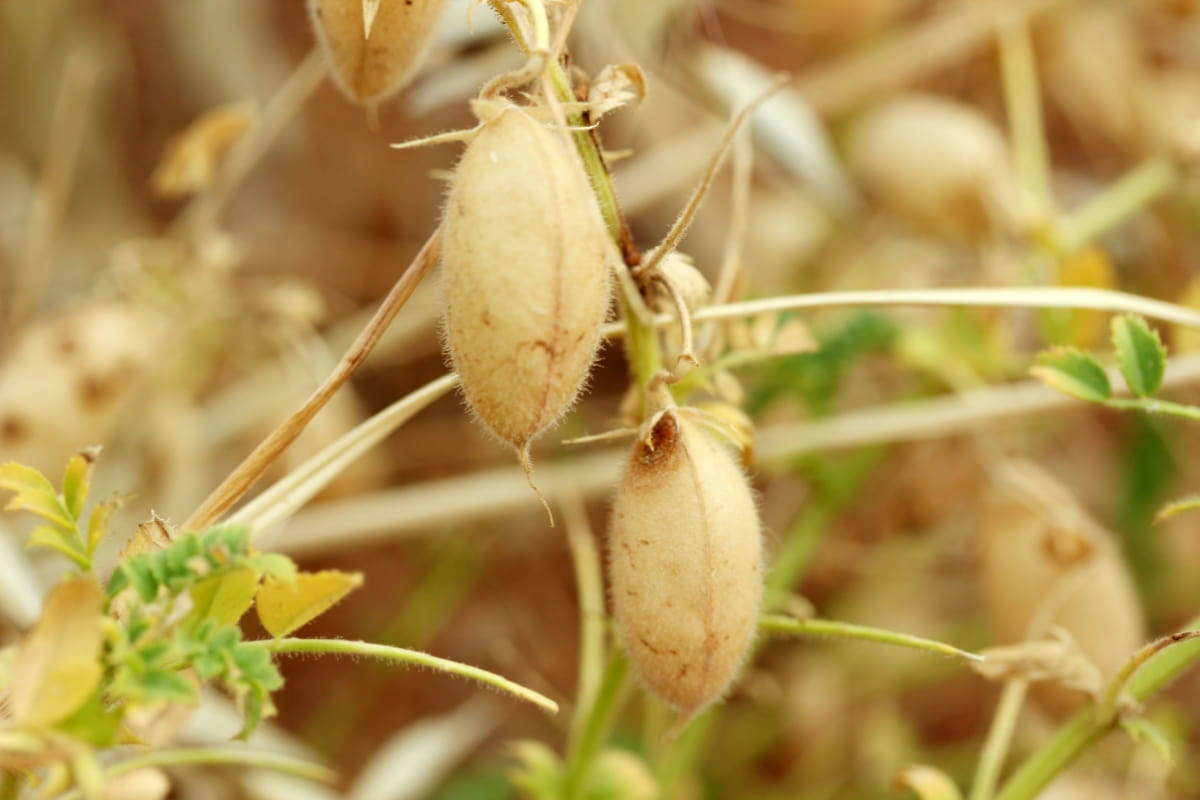Chickpea, or Bengal Gram, is a staple legume crop with significant importance in various global cuisines, particularly in India, where it forms a major part of the dietary protein source. The cultivation of chickpeas is a profitable venture due to its high demand, adaptability to diverse climatic conditions, and minimal requirements for successful growth. Chickpea farming project reports highlight the economic viability of this crop, with an emphasis on sustainable practices that enhance soil health and reduce environmental impact.

Various factors, including the cost of production, yield per acre, and market price trends, influence the chickpea cultivation profit margin. Investing in chickpea farming involves initial costs such as land preparation, seed procurement, and irrigation setup. Nevertheless, chickpea cultivation offers a significant return on investment (ROI), presenting an appealing opportunity for farmers seeking to broaden their agricultural ventures.
1-Acre Chickpea Project Report
Importance and Uses
Chickpeas are incredibly versatile, serving as a key ingredient in numerous culinary dishes and contributing to soil fertility through nitrogen fixation. This process enriches the soil and benefits subsequent crops in a crop rotation system. The economic analysis of chickpea cultivation reveals its dual role in providing a direct source of income through chickpea farming income and enhancing the yield of future crops, thereby supporting sustainable chickpea farming economics.
Furthermore, chickpeas have a growing market in the health food sector, particularly organic chickpea farming profitability, which taps into the demand for nutrient-rich, sustainably grown food products.
Chickpea/Bengal Gram Varieties
In India, several commercial chickpea (Bengal Gram) varieties are cultivated, each with unique characteristics suited to different climatic conditions and soil types. Several notable varieties stand out in the agricultural landscape. One such variety is ‘JG 11’, renowned for its high yield and resistance to wilt. Another is ‘Pusa 372’, favored for its large, bold seeds and ability to thrive in diverse growing conditions.
‘Vijay’ is esteemed for its drought tolerance and resistance to disease. ‘KAK 2’ is notable for its early maturity and potential for high yield. Lastly, ‘BGD 112’ excels in its adaptability to rainfed conditions and its resistance to pod borer. These varieties contribute significantly to the diversity of chickpea cultivation in India, offering farmers options to maximize yield and meet market demands.
Land
Soil Preparation
Soil preparation is a foundational step in chickpea cultivation, entailing plowing, harrowing, and leveling to create the optimal seedbed for chickpeas. This process, costing around ₹5,000 per acre, is essential for ensuring proper soil aeration, moisture retention, and root penetration, which are critical for the healthy growth of chickpea plants.
In case you missed it: 1-Acre Soybean Farming Project Report: Economics with Costs and Profit Analysis

Well-prepared soil also facilitates better germination rates and eases the process of root establishment, setting the stage for a successful crop. This initial investment in soil preparation is a key component of the financial planning for chickpea farming, contributing to the breakdown of overall chickpea farming expenses and impacting the economic analysis of chickpea cultivation.
Seed Selection and Sowing
Cost of High-Quality Seeds
Selecting high-quality chickpea seeds is crucial for achieving high yields and quality produce, with the cost for these seeds averaging around ₹4,000 per acre. This investment guarantees optimal crop initiation, employing seeds meticulously evaluated for germination rates, disease resilience, and compatibility with local climate and soil attributes.
Sowing Method and Labor
The sowing process involves carefully placing seeds at the correct depth and spacing, and the associated labor costs approximately ₹2,000 per acre. This phase is pivotal in guaranteeing adequate room for plant growth, facilitating access to essential nutrients and sunlight. It significantly impacts the yield per acre and overall crop prosperity.
Irrigation
Initial Setup for Drip Irrigation (if applicable)
While chickpeas are drought-tolerant, the initial setup for a drip irrigation system, costing between ₹15,000 and ₹20,000, can enhance yield and quality in regions with less predictable rainfall. This one-time investment, spread over the system’s lifespan, ensures efficient water use, delivering water directly to the plant roots and significantly reducing evaporation losses. Drip irrigation contributes to sustainable chickpea farming economics by optimizing water usage and increasing crop yield, making it a valuable component of the chickpea farming project report.
Fertilizers and Pesticides
Organic/Chemical Fertilizers
Whether organic or chemical, fertilizer application is essential for providing chickpea plants with the necessary nutrients for growth, costing about ₹5,000 per acre. This investment supports the development of strong, healthy plants that can produce high yields of chickpeas, directly affecting the chickpea cultivation profit margin.
Pesticides and Insecticides
To safeguard the crop against pests and diseases, an investment of ₹3,000 on pesticides and insecticides is required. This ensures that the chickpeas grow in a healthy environment, free from pests and diseases that could significantly reduce yield and quality, thereby safeguarding the investment in chickpea farming.
Labor Costs
Weeding, Thinning, and Harvesting
Weeding, thinning, and harvesting labor costs are significant, totaling around ₹10,000 per acre. This includes manual labor for removing weeds that compete with chickpeas for nutrients, thinning to ensure optimal plant density, and harvesting the crop at the right time. These activities are crucial for maintaining the health and productivity of the chickpea crop, influencing the 1-acre chickpea farming income and the overall ROI in chickpea cultivation.
Yield and Output
Average Yield per Acre
The average yield for chickpea cultivation on a 1-acre plot is around 12 quintals, reflecting the potential productivity of well-managed chickpea farms. Achieving this yield depends on several factors: seed quality, soil preparation, timely sowing, effective irrigation, and pest management practices. This output level is a critical component of the chickpea farming project report, influencing the overall financial outcomes of the cultivation process.
Quality and Grade of Produce
The quality and grade of the chickpea produced are pivotal in determining its market value and consumer acceptance. Factors such as size, color, and absence of defects play significant roles in grading the chickpeas, with higher-quality produce fetching better prices in the market. Attention to crop management practices, from sowing to harvesting, ensures that the chickpeas meet the desired quality standards, thereby maximizing the economic returns from chickpea cultivation.
In case you missed it: 1-Acre Vakkaya Cultivation Project Report: Carissa Carandas Economics with Costs and Profit Analysis

Market Price and Revenue
Average Market Price
The market price for chickpeas can vary, but an average price of ₹5,000 per quintal provides a baseline for revenue projections. This price point reflects the demand for chickpeas in the market, influenced by quality, availability, and market trends.
Total Revenue
Based on the average yield of 12 quintals per acre and the market price of ₹5,000 per quintal, the total revenue from a 1-acre chickpea cultivation can reach Rs.60,000. This revenue figure is crucial for understanding the financial viability of chickpea farming and plays a significant role in the economic analysis of chickpea cultivation.
Profit and Loss Analysis
The net profit from 1-acre chickpea cultivation is calculated by subtracting the total investment from the total revenue. With a revenue of Rs.60,000 and a total investment of Rs.29,000 (including costs for soil preparation, seeds, sowing, irrigation, fertilizers, pesticides, and labor), the net profit stands at Rs.31,000. This profit figure highlights the financial potential of chickpea cultivation, demonstrating a significant return on investment and underscoring the crop’s role in sustainable and profitable farming practices.
In case you missed it: Drip Irrigation Cost for Cherry Plantation: Exploring Installation Costs Along with Subsidy per 1-Acre Farm

Conclusion
These figures are estimations and real outcomes may differ depending on variables like location, chickpea type, yield, market rates, and farming methods. The initial irrigation setup expense was not accounted for, suggesting the possibility of higher profits starting from the second year.
- Feed Your Flock for Less: Top 10 Tips to Save on Chicken Feed
- Ultimate Guide to Ossabaw Island Hog: Breeding, Raising, Diet, and Care
- Hatching Answers: The Top 10 Reasons Your Chickens Aren’t Laying Eggs
- Eggs and Economics: Breaking Down the Cost of Raising Backyard Chickens
- Defend Your Greens: Proven Methods to Keep Iguanas Out of Your Garden
- Ultimate Guide to Cinnamon Queen Chicken: A Comprehensive Guide for Beginners
- Ultimate Guide to California Tan Chicken: Breeding, Raising, Diet, Egg-Production and Care
- Ultimate Guide to Marsh Daisy Chicken: Breeding, Raising, Diet, and Care
- 10 Types of Chicken Farming Businesses You Can Start for Profits